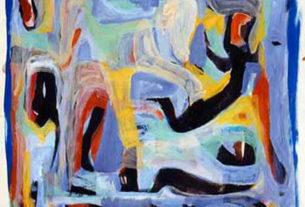Mexican History
Do you ever feel pressed for time? Have you felt the weight of time hanging heavily on your shoulders? Pity the poor Maya deities who bore the Burden of Time throughout all eternity and then some. The ancient Maya calendar was closely bound up with religion and, like all people, the Maya asked the same questions: Why are we here and what is it all about? They found their answer in tracking the gods who carried the Burden of Time on their backs, each deity picking up the burden laid down by the preceding deity. While the Maya may appear to have been obsessed with time, recent advances in the decipherment of the Maya hieroglyphic writing system show this was not the sole concern of the Maya. Nevertheless, some people have read their own interpretations into the Maya calendar and the Mesoamerican concept of cyclical time and come up with conflicting theories that would have left the ancient Maya speechless.
The Maya calendar used two main systems of time-reckoning – the Long Count and the Calendar Round or Cyclical Time. From the stone stelae, such as monument 6 (stela E) at Quirigua, Guatemala, we can read the Long Count system of the Maya calendar, which refers to linear time as we reckon it. The Maya needed to keep track of past, present, and future in order to justify dynastic succession. The Short Count, or Cyclical Time, was for ceremonial purposes.
The order of reading on a stela is from top to bottom and left to right. For example, the starting date of the current Maya era reads 13.0.0.0.0., which corresponds to 3114 B.C. in the Gregorian calendar. The evidence for this date is based on the comparison of known historical events, such as the founding of Merida in 1542, with corresponding dates in the Yucatec Maya calendar.
The Maya counted by 20’s rather than 10’s as we do. They were also inordinately fond of numbers. I shall give both the Maya terms and the corresponding time periods of the Gregorian calendar in order to illustrate the correlation of European and Maya dates. In Mayan, the series of numbers 13.0.0.0.0. translates as 13 Baktuns (1 Baktun=20 Katuns or 144.000 days), 0 Katuns (1 Katun = 20 tuns or 7,200 days), 0 Tuns (1 Tun = 360 days + 5 unlucky days), 0 Uinals (1 Uinal = 20 days of the Maya month). 0 Kin (1 Kin = one day of 24 hours). Don’t be confused by the numbers, it’s straightforward arithmetic based on the 20-digit Maya counting system. In order to keep track of the ceremonies and numerous religious obligations, the Maya also used a 260 day Sacred Almanac in addition to the Long Count or 365 day vague year.
A typical Maya inscription begins with a heading, called the Initial Series, followed by the five glyphic forms just mentioned which count the days from the beginning of the calendar inscription. Two more glyphs, each consisting of a number from 1 to 13 and a day name, were added at the end of the five period glyphs. The two together fixed the precise date on the inscription. Thus the beginning of the current Maya era reads 13.0.0.0.0. 4 Ahau (on the Sacred Almanac) 8 Cumku (on the 360 day vague year calendar). This is called the Calendar Round because the two calendars intermesh in such a way that it takes 52 years for the same combination of numbers and names to recur.
So what’s all the fuss about the year A.D. 2012 in the Maya calendar? Will it usher in a New Age? Will strange phenomena suddenly appear on that date? Does the date correspond with some momentous astronomical event, as some believe? What were the Maya thinking of when they set this date in the first place? The Maya were used to making time calculations into the future and the past of such magnitude that it makes our twelve or fourteen billion year estimate of the birth of the universe seem like yesterday. I can almost hear the laughter arising from the tombs of the ancient priests and scribes at the “sound and fury” generated today by their astronomical observations.
So how do we arrive at the fateful date 2012? As we have just seen, the zero date of the beginning of the current Maya era begins with the designation 13 Baktuns. Since 1 Baktun equals 144,000 days (approximately 394.52 years), we can calculate the length of the era simply by multiplying by 13, which gives about 5128 years for the length of the entire cycle. Subtracting this from the starting date 3114 B.C., we arrive at a date within a few years of the magical 2012 number. Further calculations refine the date of the end of the current Maya era to December 21, 2012.
There is no mystery here, at least not in the numbering system. The fundamental question, at least for the 2012 debate, is why did the Maya choose 3114 B.C. as the starting point? Obviously, such a sophisticated calendrical system did not spring forth fully developed like Athena from the head of Zeus; it took some time to develop. But the Maya did not exist at that early date. The earliest recorded Lowland Maya villages begin around 1,000 B.C. It is most likely that the starting date of the current Maya era is simply a starting point of the current Maya era, a hypothetical date calculated by Maya priests and astronomers.
Of the many conflicting theories about 2012, we shall concentrate on only one. John Major Jenkins, an amateur Maya scholar, believes that the Maya were thinking not of the starting date 3114 B.C. but rather of the end date A.D. 2012, the moment at which the sun crosses the middle of the Milky Way galaxy. Astronomers call this “the precession of the equinoxes,” an event which occurs only once every 26000 years. Apparently precession takes place when this deceptively stable world of ours wobbles as it makes its rounds throughout the heavens. To observers on earth, this means that over a very long period of time galaxies change position in the heavens with reference to a fixed viewing point on earth. So-called “fixed” stars appear to move but this is due to the spin of the earth and its orbit around the sun. However, constellations do change shape over tens of thousands of years because of star movement.
According to Jenkins’s Galactic Alignment Theory, the Maya knew all about the coming precession in 2012 and so set the starting date of their calendar to coincide with this astronomical event. This is highly unlikely for several reasons. First, some scholars point out that ancient civilizations in general possessed neither the instruments required for making such precise calculations nor star charts of sufficient duration for such long-term comparisons. Secondly, astronomers tell us that the time of the actual crossing of the Milky Way is not precise and could take place over a number of years, depending on your definition of the middle line of the galaxy. Finally, the concept of cyclical time was common throughout Mesoamerica. The 2012 date therefore is simply a transitional stage between one cycle and another in a never-ending sequence of vast time cycles.
Let us suppose that the sun does cross the middle of the Milky Way precisely on December 21, 2012. What is so significant about this event? Will anyone but an astronomer or a John Major Jenkins even notice, much less care about it? Remember the year 2000? On that supposedly fateful New Year’s Eve, we entered a new century. Some people were convinced we were entering a new and exciting stage of human awareness and consciousness. But apart from a few blips on your computer because of our bad habit of using only the last two digits of a year, did you notice anything amiss? But everybody loves a mystery and, when there is none, people will invent one. Now we have a new mystery coming up, at least for those who think 2012 will herald the beginning of a New Age when the collective human consciousness will merge into some kind of esoteric galactic harmony. Some people believe that we owe our form of civilization to aliens from outer space who then departed for far distant galaxies. If they should happen to return one day, the first question I ask will be: Why did the Maya pick the date 3114 B.C.?


